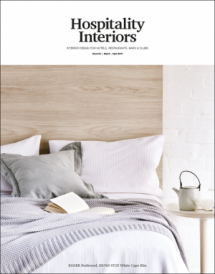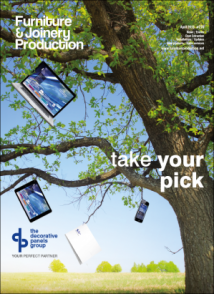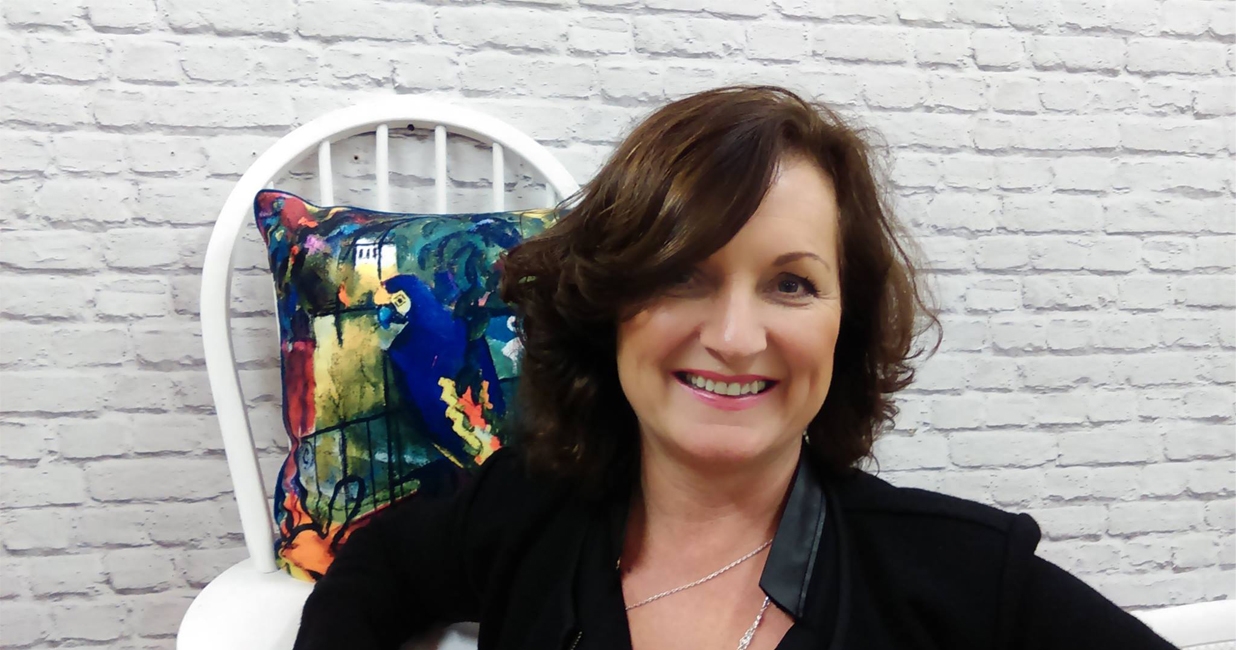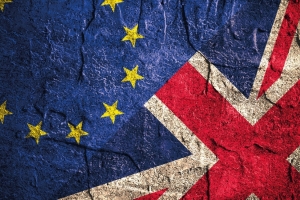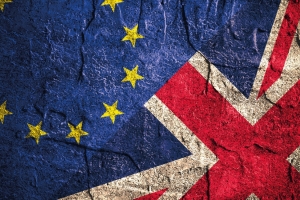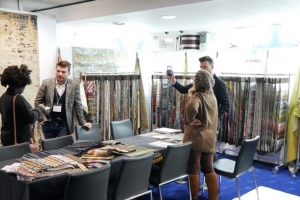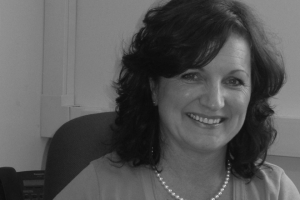Abbeylands Furniture – best known in the trade for its Scatter Box home interiors brand – celebrates four decades of business this year. Last month, in a rare moment of reflection between Heimtextil and the January Furniture Show, MD Caroline Horgan took the time to speak to Furniture News about the company’s past, present and future …
Scatter Box is one of Ireland’s leading designer furnishings brands. Based in Navan, County Meath, the 31-strong Abbeylands team creates everything from cushions and throws to art and occasional furniture for the domestic and contract marketplaces, while offering local manufacturers fillings from the company’s own foam conversion unit.
Established in 1979 by Danny Fitzpatrick, Abbeylands began life as a furniture manufacturer, but was forced to diversify its offer 12 years ago, and hasn’t looked back since …
What prompted the decision to diversify?
Abbeylands was established by my father as a convertor/supplier of foam and fibre for the manufacturing industry, and I took over the company upon his retirement in 1999.
However, over the following years, it was devastating to see the trade dying and factories closing due to the growth of leather imports.
It wasn’t really an automatic decision to move into soft furnishings, but we looked at all the products that fitted within our resources and factory capabilities, such as sewing and fillings – and we started to produce beautiful sample products in-house, like futons, beanbags and cushions.
But, of course, we had no customers, and no sales or design team. Sales and market demand were our first challenge, so we made approaches to major retailers such as Dunnes stores to supply them with own-label products. We were successful in securing large orders from a few groups, and that gave us a start. But we needed more mid-market customers, so, because it was what we knew, we decided to target furniture retailers.
Abbeylands exhibited in Dublin in September 2005, with a full selection of products and memory foam pillows. The reaction to our soft furnishings was amazing, but the feedback we received was asking for a more co-ordinated range, so we went back to the drawing board and came up with a collection of co-ordinated cushions and throws, and relaunched at the January Furniture Fair at the NEC in 2006 as a trendy new brand – Scatter Box. We came away with a full order book and plenty of leads.
This in itself created problems, as while we had the capabilities, the culture and nature of foam supply was on a JIT basis – but textiles needed planning and production budgeting as well as a competitive materials supply chain from Asia and Europe.
We learned from this, and invested in people with the skill to manage the process of supplying to retailers (rather than manufacturers). The costs associated rose substantially, but we undertook lean manufacturing strategies to ensure we were operating at our keenest costs.
Despite our diversification, the last decade of overall global economic downturn has made surviving in the industry a real challenge – but we haven’t ever rested on our laurels. We continued to assess the market’s needs, offering our lookbooks as part of our USP that we follow fashion trends and source worldwide.
We’ve launched new products, adding art and occasional furniture to the Scatter Box brand last year. This is part of our strategy to move towards offering a complete accessories solution.
What are the biggest changes you’ve seen in the soft furnishings industry?
In terms of design and colour trends in recent years, fashion and home are now competing neck and neck. Scatter cushions in particular have become an integral part of home décor – and you can see this in high street retailers such as Zara, River Island and H&M, who have all moved into the sector.
Traditional furniture retailers also recognise the value of soft furnishings in enhancing their upholstered furniture. With the trend in the past few years of using plain-colour bases in upholstery furniture, sofa and bed buying decisions can often be influenced by decorative pillows, and these in turn are influenced by fashion colours.
The emergence of digital printing has changed the versatility of design choices in fabrics – unique designs can be produced in the small quantities needed for scatter cushions. However, despite the higher costs, we also see increasing demand for digital printing in fabrics for curtains and bedding, as designs can be changed more quickly to keep up with demand for fashion trends and keep fresh products coming through the stores.
Can you share any tips on upcoming colour/pattern trends?
We’ve always been bold in our colours, and our original handpainted floral designs have been a staple within the collections. This year, the floral trend is more for bold watercolour looks, but we’ve taken inspiration from the huge trend in fashion of animal prints.
As well as the classic black/cream, we’ve taken the key colours for 2019 – greens, blues, teals, yellows, mustards, greys, blush, orange and coral – and added colour to animal-inspired patterns. We’ve seen trends using nature in all aspects – our new collection comprises designs with leaves, feathers and birds (look closely and you’ll even see fish!).
Velvet is still a key base fabric that we don’t see changing for a few years, as it is reasonable to produce and durable. However, fabric mills are developing new mixes of fabrics, with some viscose yarns and textures adding sheen and interest to fabrics.
The classic fringe is also making a comeback, as it adds perceived value to what were plain piped cushions.
_resize.jpg)
Where does your team look for design inspiration?
Last year alone we attended 14 different trade fairs, and in each country we also researched the shops in the major cities – for example Paris, London, Amsterdam, Montreal and New York. We look not only at home offers, but at fashion and wallpaper.
Enterprise Ireland run fashion workshops in design and colour, and we buy their trend books and have access to their database. However, the real heart of our inspiration is based on our team’s gut instinct when it comes to introducing new colours – the number one criteria is that we have to love it. Commercially, we have to look at what sold last year, what our customers liked and how we move it on without being the same – we have a base to work from, but we know they love to see newness.
The design and sampling process means we need to work six to nine months in advance of new releases.
How are soft furnishings displays changing in retail?
In Ireland, all the major furniture retailers are investing in new shop fit-outs which include dedicated accessories areas. The salespeople now see the value of selling cushions or art as an upsell – or even, as I previously mentioned, something that clinches the consumer’s decision to buy.
This trend is also visible in the UK. We’ve attended the opening of some beautiful new stores and refits in UK garden centres such as Blue Diamond and Klondyke, plus retailers including Dwell and Barker & Stonehouse, to name but a few. They see accessory displays as essential– not only for sales, but to the overall store appearance and customer experience.
Online is also important – you not only need the flat shot of the product, but a mood setting image, too. Photography has become an additional but essential expense for our business.
How is the Irish furniture and furnishings market developing in contrast to its UK counterpart?
While there isn’t a massive difference overall to what can sell in either, there is a big lift in demand within the Irish market that we don’t see in the UK. This is mainly due to new housing and refits to tackle the huge housing shortage we experienced during the recession. There were several new stores opened in 2018 – and there are more to come in 2019 – from the key players in our market.
The Irish consumer is well travelled, and we have more returning expats bringing their aspirations for something new and different in their homes. There is a challenge for the buyers to have different styles and brands within these stores – exclusivity, ideally.
Why did you decide to exhibit at Ambiente this year?
The UK is still our most important export market and we exhibited at the January Furniture Show 2019 with a bigger stand – but this year we decided to look at an alternative to Spring Fair in order to meet with more international customers.
We’ve researched all the European trade fairs, and with the timing of shows, stands offered and costs, we decided on Ambiente [taking place in Frankfurt from 8-12th February], and trust this will be a fruitful decision.
When it comes to export, from production we’re equipped to handle extra capacity – and we’re committed to allocating the resources needed for follow-up, whether that means boots on the ground, or not. It will all depend on lead generation.
We hope that our first European exhibition will result in us winning more customers in each European city and securing more business for the next decade of Abbeylands!
Have you been able to Brexit-proof your business at all?
I don’t think anyone really can at this stage, but we’re certainly not just going to wait and see.
We are working with Enterprise Ireland’s Brexit team, who are keeping us up to date on all of the latest information. We know what the worst scenario is – if there are tariffs introduced – and we are working with our logistics companies as they are key to overcoming customs delays and extra administration. We dispatch daily to the UK with a two-day delivery, so any delays may potentially affect our business – but we are looking at alternative solutions, and haven’t ruled out a UK distribution centre.
What plans do you have for the rest of 2019?
This is our 40th anniversary year, and we want to celebrate it as well as increase business. We achieved a lot in 2018 – the introduction of art and occasional chairs, plus improving our marketing material, contributed to an increase in turnover of +15% and higher profitability. However, there was a decline in some areas (like ready made curtains and fabrics), so in 2019 we need to keep monitoring sales and trends and continue to invest in new product. For example, we are developing a new product range to launch at the Irish Furniture & Homewares Show (IFHS).
We are also investing more in marketing. Retailers are paying more attention to their store concepts, and we want to support them by making it easier to co-ordinate their ranges. To this end, we now view our marketing material in two ways – firstly as a basic buying tool, but secondly also as a selling tool. We want to show high-quality photography, key trends and the end use of our product to tell a story – showing how to style our product together, prompting customers to really buy into our brand.
We are keeping key colours in the same shades to run through the next season, so our retailers will be still be able to combine our new collections with their existing ranges and allow their consumers to mix and match styles to their own selections.
Find out more about the businesses featured by visiting Connect, The Furniture Trade Directory
